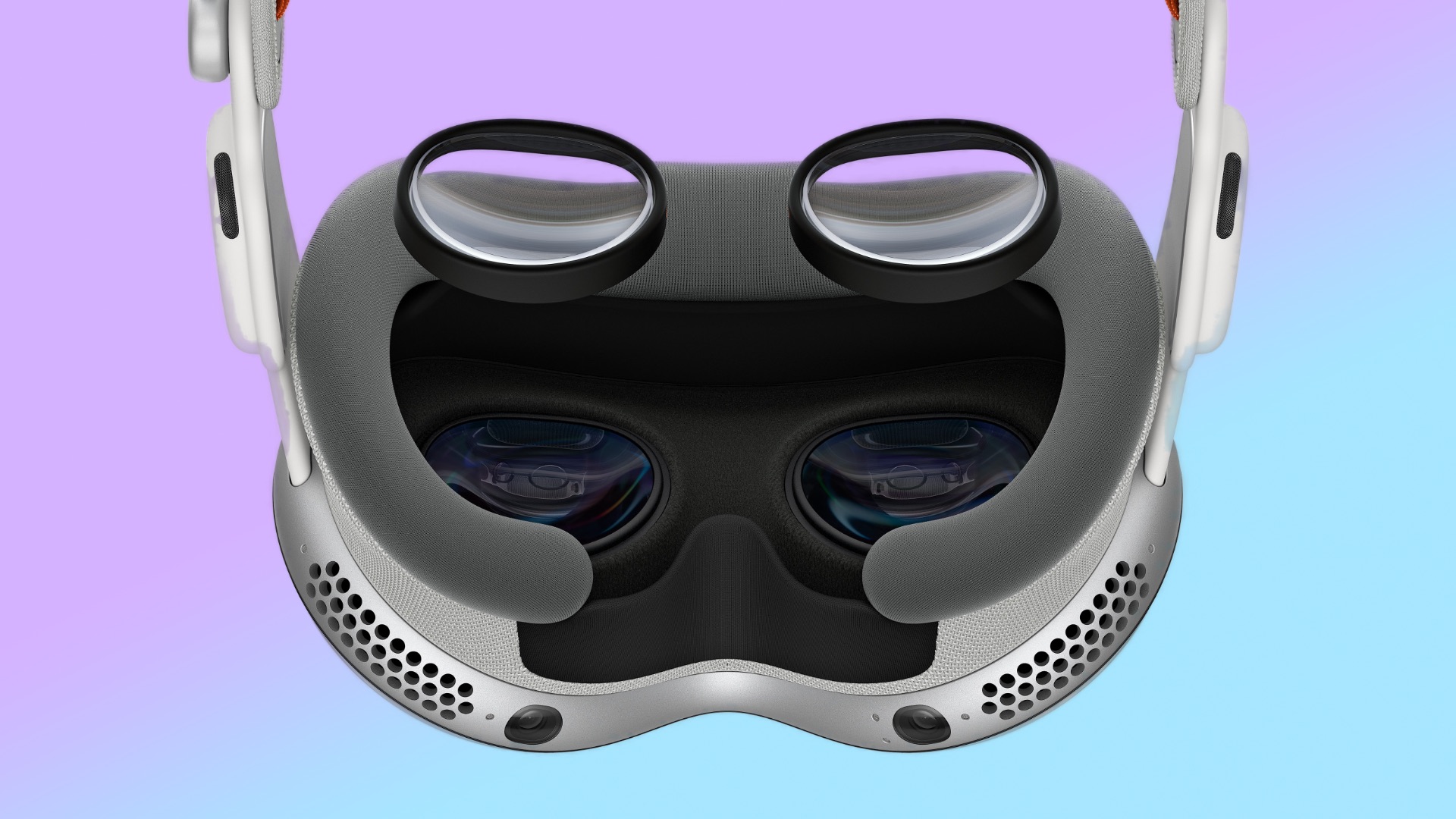Unlike other VR headsets, the Apple Vision Pro cannot be worn with glasses. Instead, Apple sells magnetic prescription lenses (between 115 and 169 euros) for people who want to adapt the product to their eyesight.
This is the question that comes up most often with the Apple Vision Pro: is it possible to use the headset with glasses? Apple's head-worn spatial computer creates an illusion of augmented vision using Micro OLED screens and cameras capable of transcribing reality. Since it simulates distance vision with screens and lenses close to the eyes, it is sensitive to vision problems and can give the impression of blur or even a double image, depending on the user's eyes.
Advertisement
Apple made a surprising choice with the Vision Pro: it doesn't have space for glasses. The Californian brand decided to team up with Zeiss, which makes custom-made corrective lenses for the headset. They magnetically attach to the Vision Pro, with the option of having several for everyone in the family.
In France, the sale of corrective lenses is strictly regulated by the Public Health Code. Apple cannot improvise as an optician, which requires it to set up a strict purchasing process to collect no medical data.
We bought corrective lenses for Apple Vision Pro
To buy Zeiss corrective lenses, there are two options. You can do this when ordering the headset, or do it afterwards. In both cases, a scan of his face from the application Apple Store is mandatory. Apple determines whether the size of the head protector chosen is suitable for the glasses, or whether you have to buy another one (for 200 euros, but fortunately you can refuse the change. It shouldn't be too inconvenient in any case).
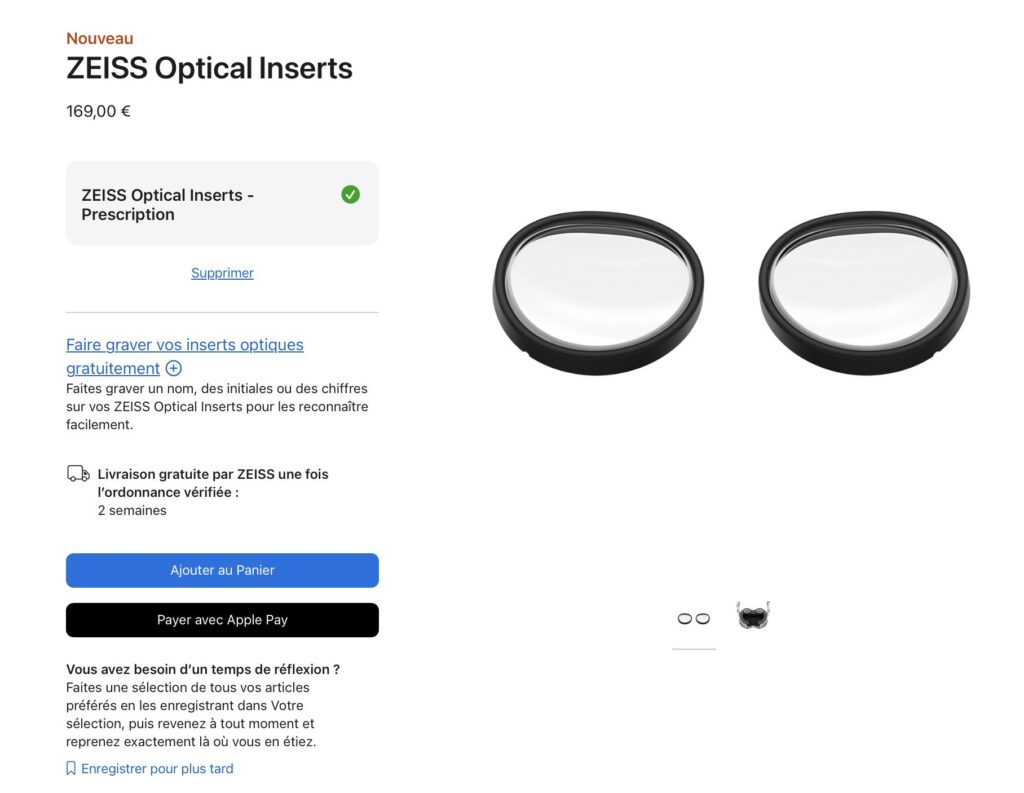
Two types of glasses are offered by Apple:
Advertisement
- “Readers” lenses, to improve near vision, with three fixed options (+0.75D to +1.25D+1.50D to +1.75D And +2.00D to +2.75D). They cost 115 euros and can be purchased directly in store.
- “Prescription” lenses, which cover many more vision problems (but not all, unfortunately). They cost 169 euros and require you to provide a prescription. These are the ones we chose for our test.
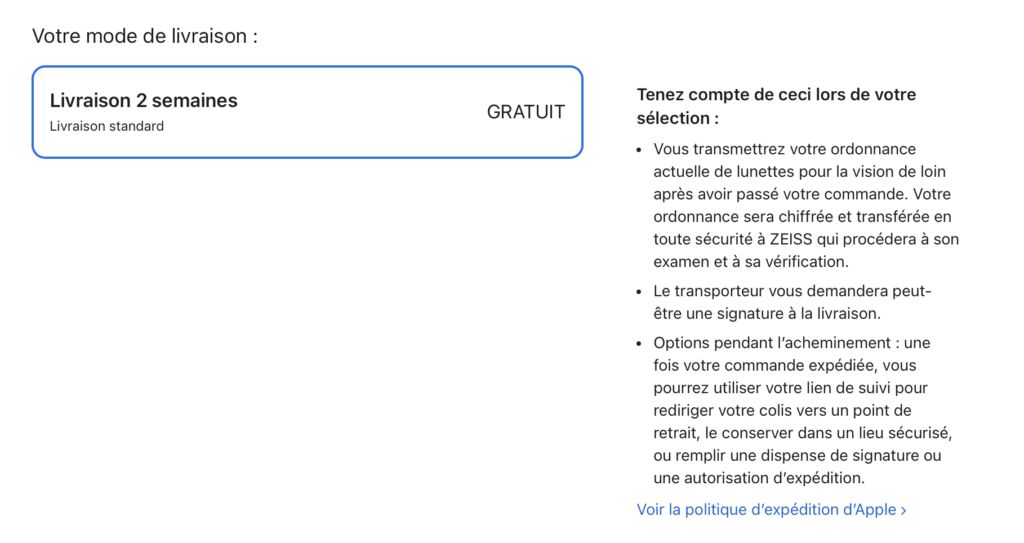

An order that goes through Apple, but only concerns Zeiss
Ordering prescription lenses looks like a normal order for an Apple product, with a classic purchasing journey that requires no prescription. In our case, we want to correct slight myopia and slight astigmatism, which probably have the very small effect of making certain texts less smooth than they really are.
At the end of the order, Apple tells its customer that he has one month to transmit a prescription to ZEISS, thanks to an “encrypted” platform set up by its services. An email also allows you to access the link at any time, in case a visit to an ophthalmologist or optician is necessary to update.
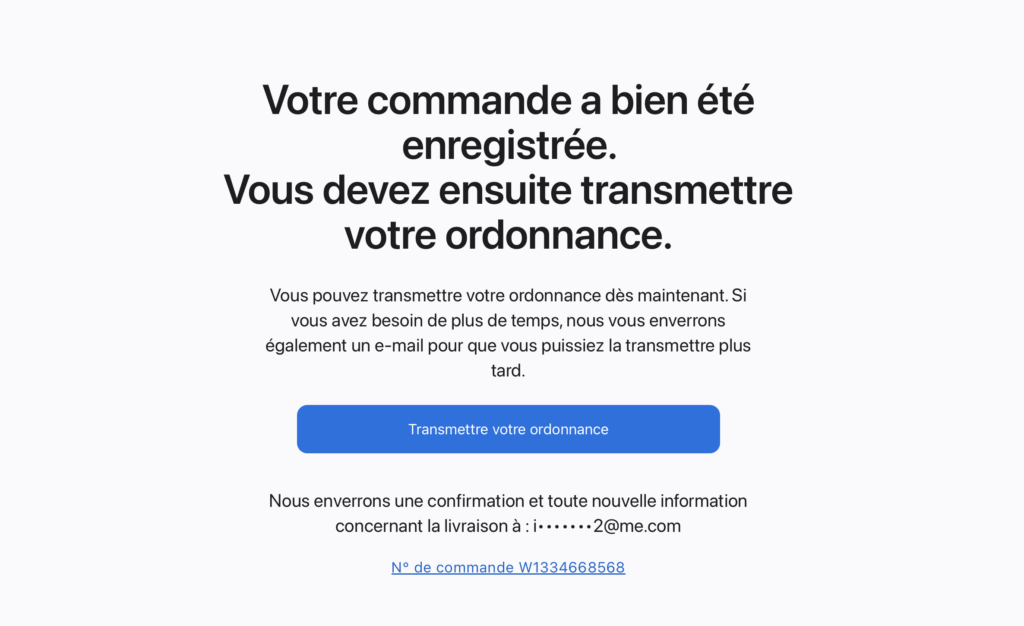

In the email sent by Apple, the brand goes into detail from a legal point of view.
“In the interest of protecting your privacy, Apple will not have access to the information contained in the prescription you submit to order your ZEISS Optical Inserts – Prescription. The transmitted prescription will be encrypted and securely transferred to ZEISS »specifies the Californian brand. It adds that it needs a comprehensive prescription signed by a doctor, which is still valid at the time of sending.


When you click on the link, you arrive at a platform with a send button, to transfer a photo or a PDF document. In a few seconds, you send your medical prescription to Zeiss. You must then consent “to the collection, use, disclosure and processing of prescription data provided by Carl Zeiss Vision International GmbH and Carl Zeiss Vision France SAS (ZEISS) in order to produce ZEISS Optical Inserts and provide related services”. Nothing illogical.
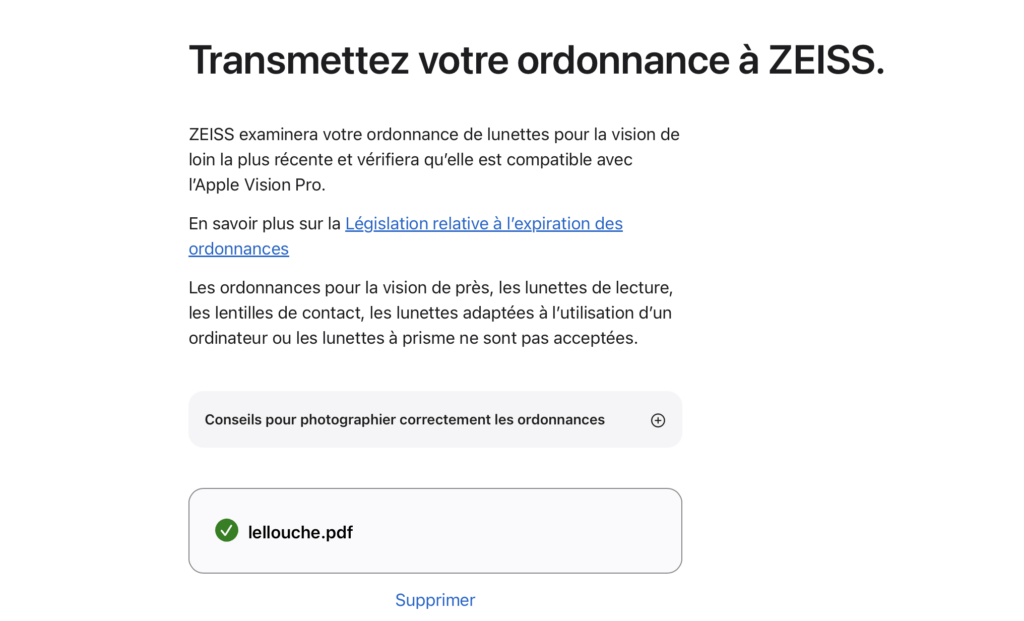

After sending this document, we receive a “standardized quote” by email from Zeiss. It does not contain any medical information, since Zeiss has not yet examined the compatibility of the prescription with the Vision Pro. Apple, for its part, only serves as an intermediary for the order.
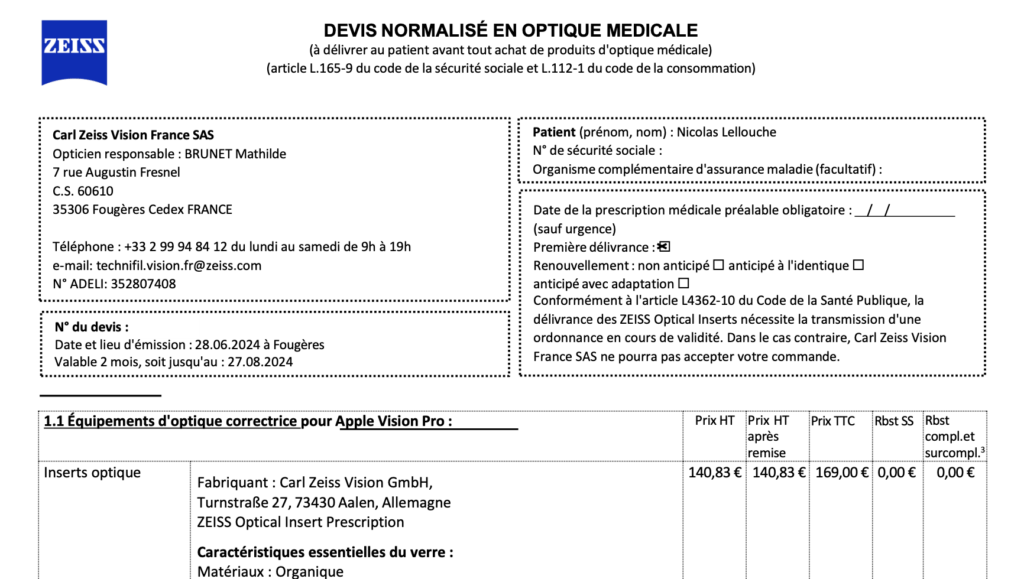

Will our prescription be accepted? Our date of birth is not listed, contrary to Zeiss's requirements. Answer on July 12, if Zeiss ophthalmologists, who are authorized to process prescriptions, send the ordered pair.


Strong points
- The computing of tomorrow, without a doubt
- Eye tracking is extremely effective
- The screens are crazy (we can't see the pixels)
- Several uses really make you want to
- The most ambitious Apple product in history
Weak points
- The weight, still too high for daily use
- The laws of optics (accommodation, dryness, field of vision, etc.)
- Is society ready to accept it?
- $3,500…and how much in euros?
